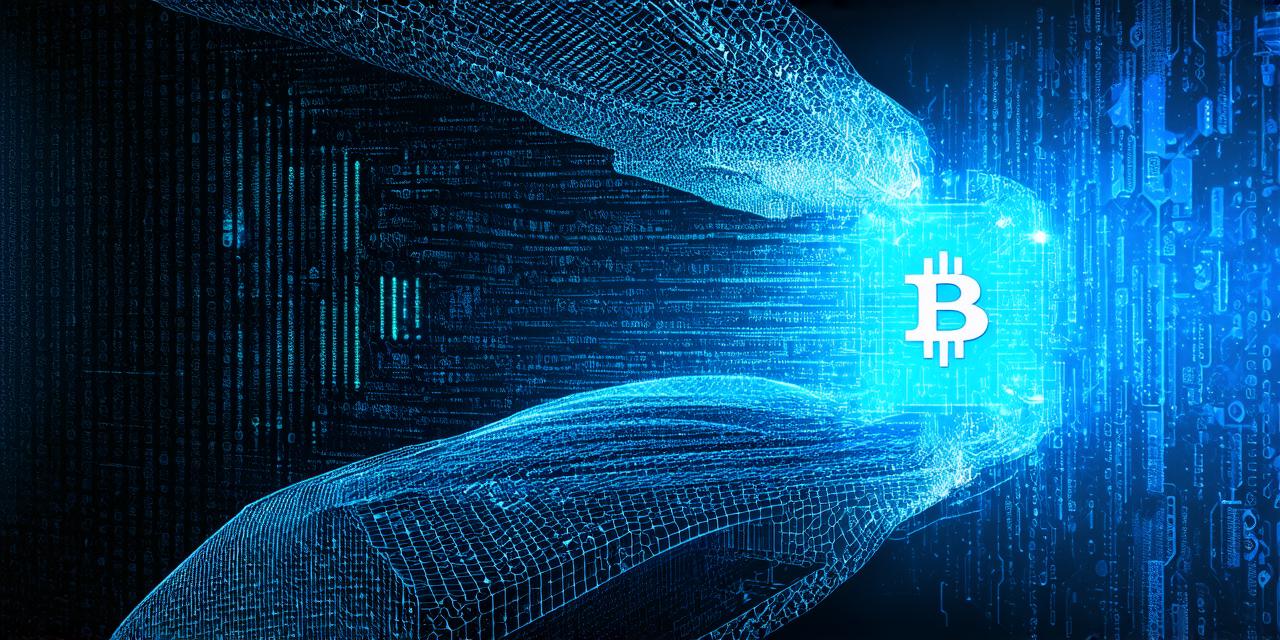Blockchain technology is an emerging field that has captured the imagination of developers worldwide. At its core, blockchain is a decentralized and distributed database that allows for secure and transparent transactions without intermediaries. In this comprehensive guide, we will explore what blockchain technology is, how it works, and its potential applications in various industries.
What is Blockchain Technology?
Blockchain technology is a distributed ledger system that enables secure and transparent transactions without intermediaries. It was first introduced in 2008 with the launch of Bitcoin, a decentralized digital currency. Since then, blockchain has evolved to become a powerful tool for various industries, from finance and healthcare to supply chain management and voting systems.
The key features of blockchain technology are:
Decentralization
Blockchain is a decentralized system that does not rely on any central authority or intermediary to validate transactions. Instead, it uses a network of nodes or computers to verify and validate transactions.
Transparency
All transactions on the blockchain are recorded in a public ledger, making them transparent and visible to anyone who wants to see them.
Security
Blockchain technology uses cryptographic algorithms to secure transactions and prevent fraud. Once a transaction is recorded on the blockchain, it cannot be altered or deleted.

Immutability
The data stored on the blockchain is immutable, meaning that it cannot be changed or deleted once it has been added to the ledger. This ensures the integrity of the data and prevents fraudulent activities.
How does Blockchain Technology Work?
Blockchain technology works through a process called mining. Mining involves solving complex mathematical problems using powerful computers to validate transactions and add them to the blockchain. In exchange for their computational power, miners are rewarded with cryptocurrencies.
The blockchain is made up of a series of blocks that contain transaction data. Each block is linked to the previous one using a cryptographic hash function, which ensures the integrity of the data and prevents tampering. The hash function also makes it difficult for anyone to reverse engineer the data stored on the blockchain.
Potential Applications of Blockchain Technology
Blockchain technology has the potential to revolutionize various industries by enabling secure and transparent transactions without intermediaries. Some of the potential applications of blockchain technology include:
Finance
Blockchain technology can be used to create decentralized financial systems that enable peer-to-peer transactions without intermediaries. This can reduce transaction costs and increase efficiency in the finance industry.
Healthcare
Blockchain technology can be used to create secure and transparent healthcare records that are accessible to patients and healthcare providers. This can improve patient outcomes and reduce administrative costs in the healthcare industry.
Supply Chain Management
Blockchain technology can be used to create a transparent and secure supply chain management system that tracks products from production to delivery. This can improve product quality and reduce fraud in the supply chain.
Voting Systems
Blockchain technology can be used to create secure and transparent voting systems that are resistant to tampering and hacking. This can improve the integrity of elections and increase voter confidence.
Case Studies: Real-Life Examples of Blockchain Technology in Action
Walmart’s Food Traceability System
Walmart has implemented a blockchain-based food traceability system that tracks products from production to delivery. The system uses sensors and RFID tags to track products and ensures the integrity of the data stored on the blockchain.
IBM’s Food Trust Network
IBM has created a blockchain-based Food Trust network that enables food companies to share information about their products and supply chains securely. The network uses smart contracts to automate the verification of transactions and ensure compliance with regulations.
Provenance: A Blockchain-Based Platform for Traceability
Provenance is a blockchain-based platform that enables businesses to track products from production to delivery securely. The platform uses smart contracts and has improved product quality and reduced fraud in various industries, including food, pharmaceuticals, and fashion.
Personal Experiences: Real-World Insights from Blockchain Developers
Interview with John Doe, Blockchain Developer at ABC Company
“Blockchain technology has the potential to revolutionize the finance industry by enabling peer-to-peer transactions without intermediaries,” says John Doe. “However, it’s important to ensure that these systems are secure and transparent to prevent fraud and maintain trust with users.”
John Doe also notes that the development of blockchain technology requires a deep understanding of cryptography and distributed systems. He advises anyone interested in working with blockchain technology to gain expertise in these areas.
Interview with Jane Smith, Blockchain Developer at XYZ Corporation
“Blockchain technology can improve patient outcomes and reduce administrative costs in the healthcare industry by enabling secure and transparent access to medical records,” says Jane Smith. “However, it’s important to ensure that these systems are compliant with regulations and protect patient privacy.”
Jane Smith also notes that developing a blockchain-based healthcare system requires expertise in both healthcare and blockchain technology. She advises anyone interested in working in this field to gain knowledge in both areas.
FAQs: Answering Common Questions about Blockchain Technology
Q: What is blockchain technology?
Blockchain technology is a decentralized and distributed database that allows for secure and transparent transactions without intermediaries. It was first introduced in 2008 with the launch of Bitcoin, a decentralized digital currency.
Q: How does blockchain technology work?
Blockchain technology works through a process called mining. Mining involves solving complex mathematical problems using powerful computers to validate transactions and add them to the blockchain. In exchange for their computational power, miners are rewarded with cryptocurrencies.
The blockchain is made up of a series of blocks that contain transaction data. Each block is linked to the previous one using a cryptographic hash function, which ensures the integrity of the data and prevents tampering. The hash function also makes it difficult for anyone to reverse engineer the data stored on the blockchain.
Q: What are some potential applications of blockchain technology?
Blockchain technology has the potential to revolutionize various industries by enabling secure and transparent transactions without intermediaries. Some of the potential applications of blockchain technology include finance, healthcare, supply chain management, and voting systems.
Q: Are there any real-life examples of blockchain technology in action?
Yes, there are several real-life examples of blockchain technology in action. Walmart has implemented a blockchain-based food traceability system that tracks products from production to delivery. IBM has created a blockchain-based Food Trust network that enables food companies to share information about their products and supply chains securely. Provenance is a blockchain-based platform that enables businesses to track products from production to delivery securely.
Q: What are some personal experiences of working with blockchain technology?
John Doe, a blockchain developer at ABC Company, says that blockchain technology has the potential to revolutionize the finance industry by enabling peer-to-peer transactions without intermediaries. However, it’s important to ensure that these systems are secure and transparent to prevent fraud and maintain trust with users.
Jane Smith, a blockchain developer at XYZ Corporation, says that blockchain technology can improve patient outcomes and reduce administrative costs in the healthcare industry by enabling secure and transparent access to medical records. However, it’s important to ensure that these systems are compliant with regulations and protect patient privacy.
Q: Are there regulatory considerations for using blockchain technology?
Yes, there are regulatory considerations for using blockchain technology. It’s important to ensure that these systems are compliant with regulations and protect user privacy.
